
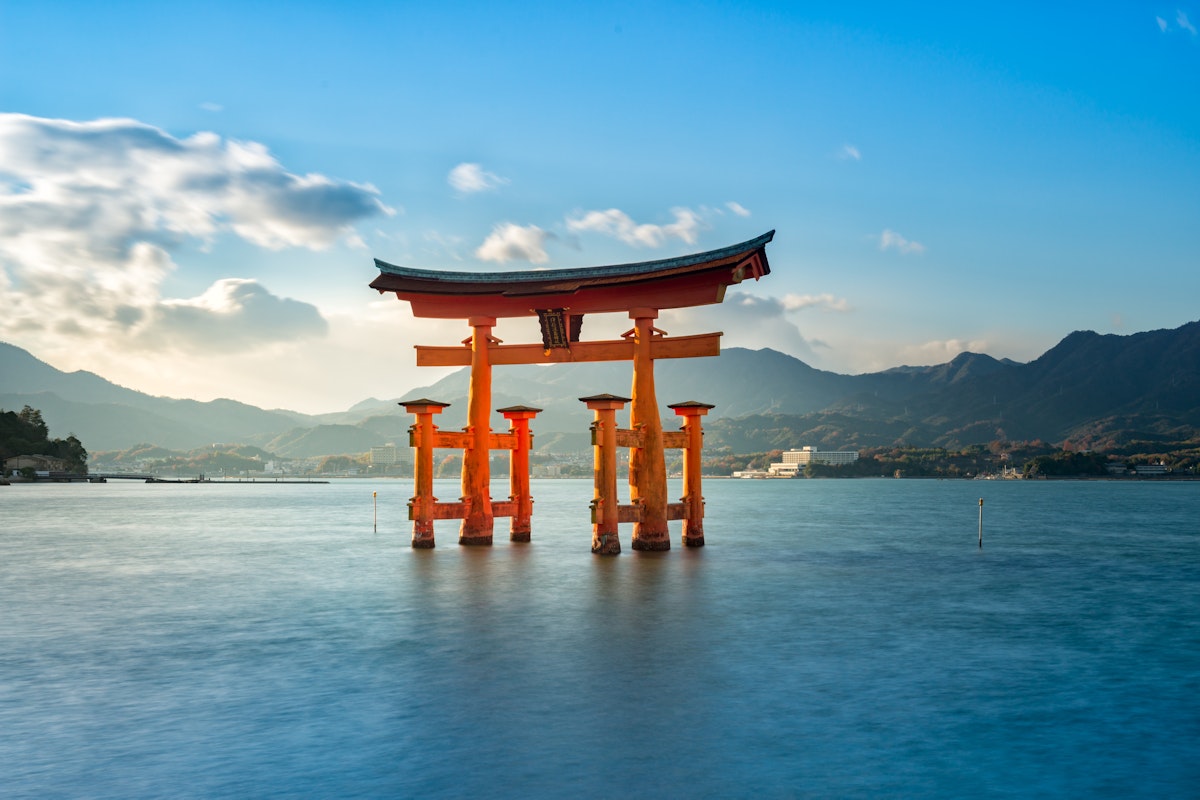
일본에서 가장 상징적인 문화 랜드마크 중 하나인 이쓰쿠시마 신사는 "떠다니는" 도리이로 유명한 고요한 미야지마 섬에 있습니다. 유네스코 세계문화유산으로 지정된 이쓰쿠시마 신사는 풍부한 역사적 중요성과 매혹적인 자연의 아름다움을 자랑합니다.
히로시마 현에 위치한 이쓰쿠시마 신사는 일본의 건축적 솜씨와 깊은 정신적 뿌리를 보여주는 증거입니다. 이 신사는 종교 유산과 주변 세토 내해의 완벽한 결합을 목격하기 위해 매년 수많은 방문객을 끌어들입니다.
이 기사에서는 이쓰쿠시마 신사가 꼭 방문해야 하는 10가지 이유를 밝히고, 매혹적인 역사를 탐구하고, 이 국보 여행을 최대한 활용하는 방법에 대한 팁을 제공합니다.
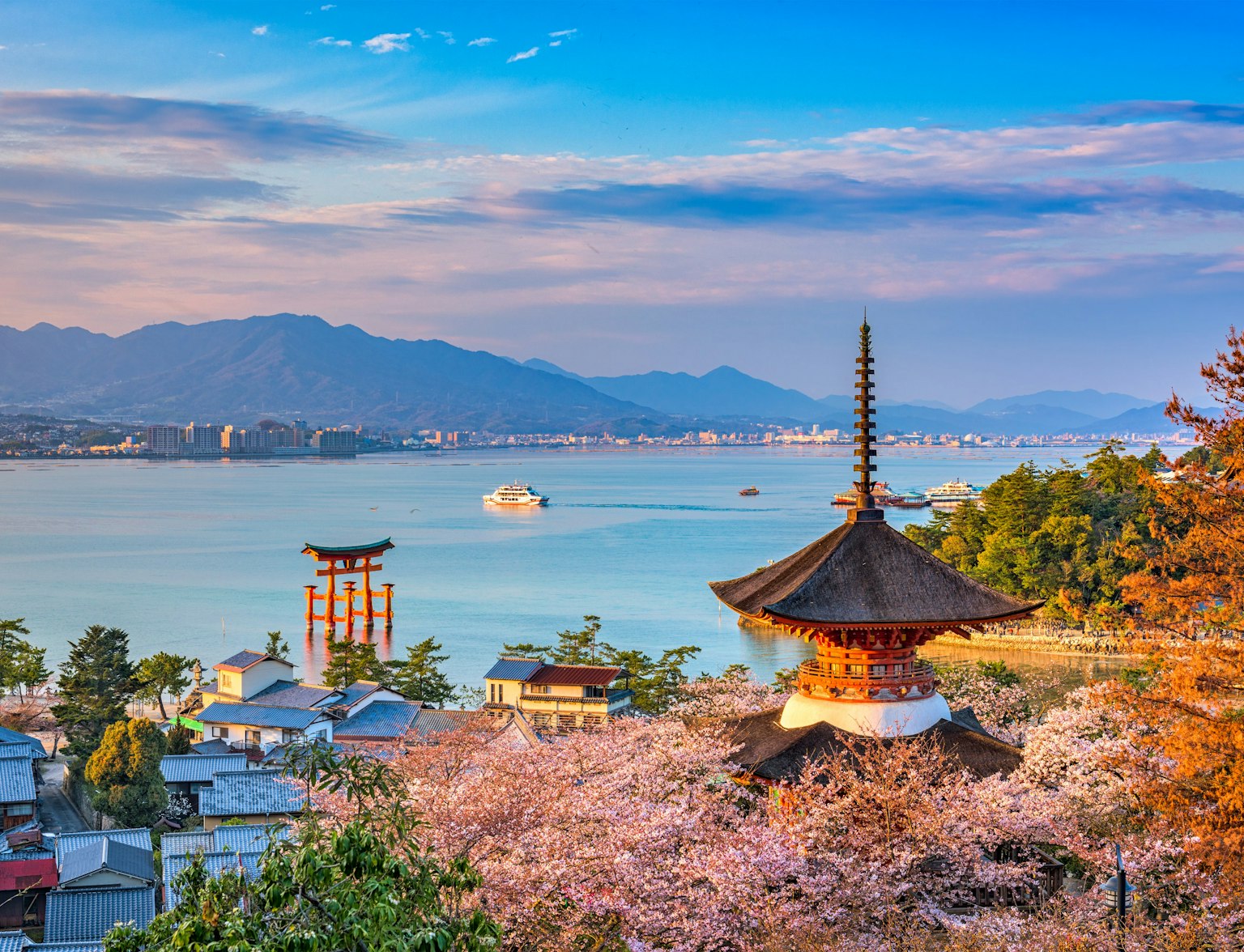
이 투어를 통해 현지 가이드와 함께 미야지마 섬을 탐험 해보십시오.
이쓰쿠시마 신사의 기원은 헤이안 시대인 593년경으로 거슬러 올라가지만, 현재의 형태는 12세기 후반 다이라노 기요모리에 의해 확립되었습니다. 기요모리의 신사 방문은 다이라 가문의 영향력이 커지는 계기가 되었으며, 그는 신사를 오늘날의 건축적 걸작으로 탈바꿈시켰습니다.
신사의 디자인은 일본 황실의 영향을 반영하며, 물 위에 독특한 건축물은 평범한 사람들이 섬에 발을 딛는 것이 금지된 섬의 신성한 지위를 수용하기 위한 것이었습니다. 신사는 본당, 고대, 정화 홀을 포함한 여러 건물로 구성되어 있으며, 모두 바다 위에 떠 있는 복도로 연결되어 있습니다.
이 건축물은 당시의 건축 양식을 구현하며 일본 고대 건축가의 독창성과 정신성을 보여주는 증거로 계속 서 있습니다.

미야지마의 전통 다도를 통해 일본 문화를 체험해 보세요.
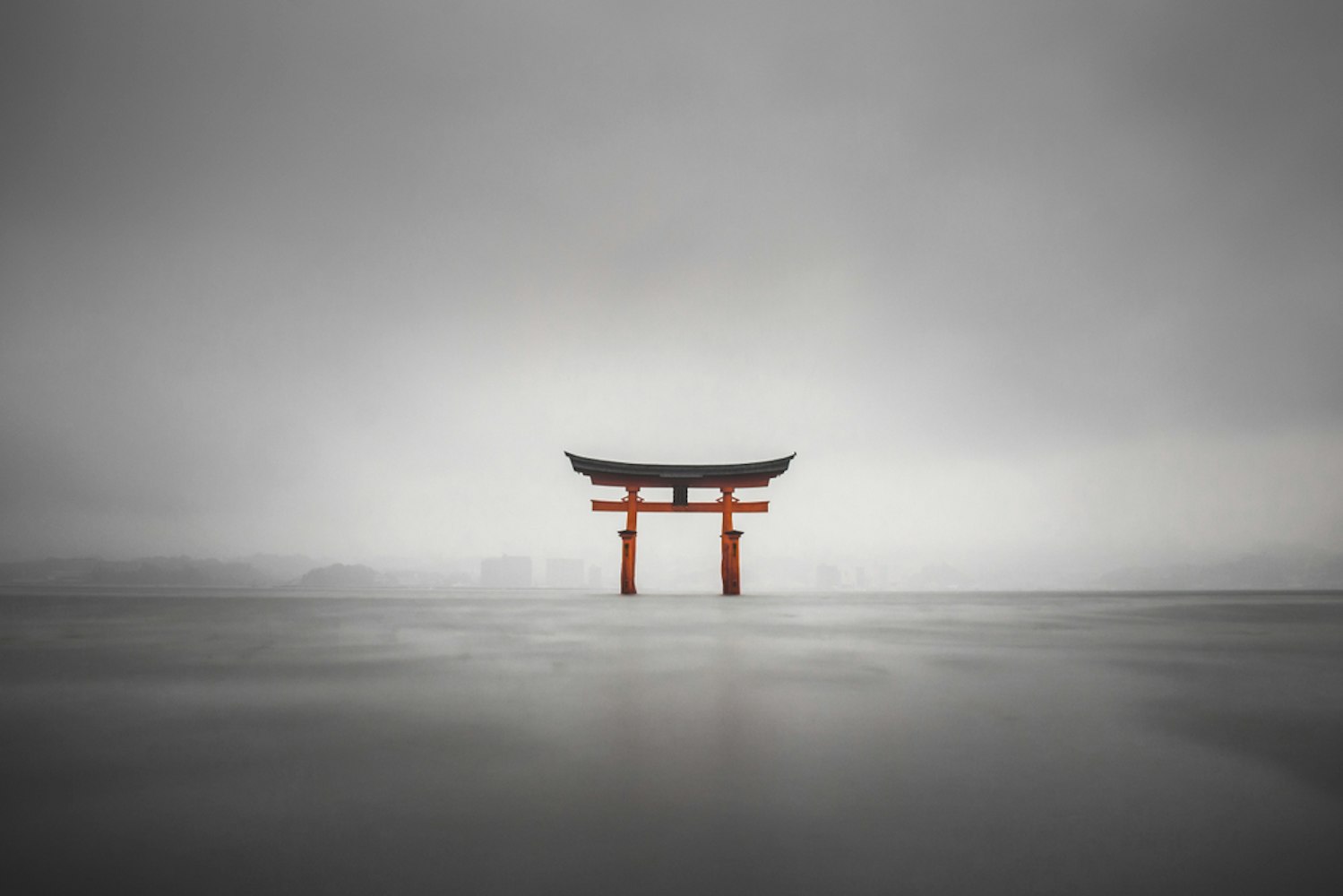
도리이(鳥居)에 있는 이쓰쿠시마 신사 만조 때 물 위에 떠있는 것처럼 보이며 미묘한 광경을 연출합니다. 방문객들은 썰물 때 문까지 걸어가 그 크기와 장인 정신을 감상할 수 있습니다.
이 상징적인 구조물은 영적 세계와 인간 세계 사이의 경계를 나타냅니다. 중앙 기둥은 세토 내해를 배경으로 견고하게 서 있어 조수에 따라 변하는 멋진 전망을 제공합니다.
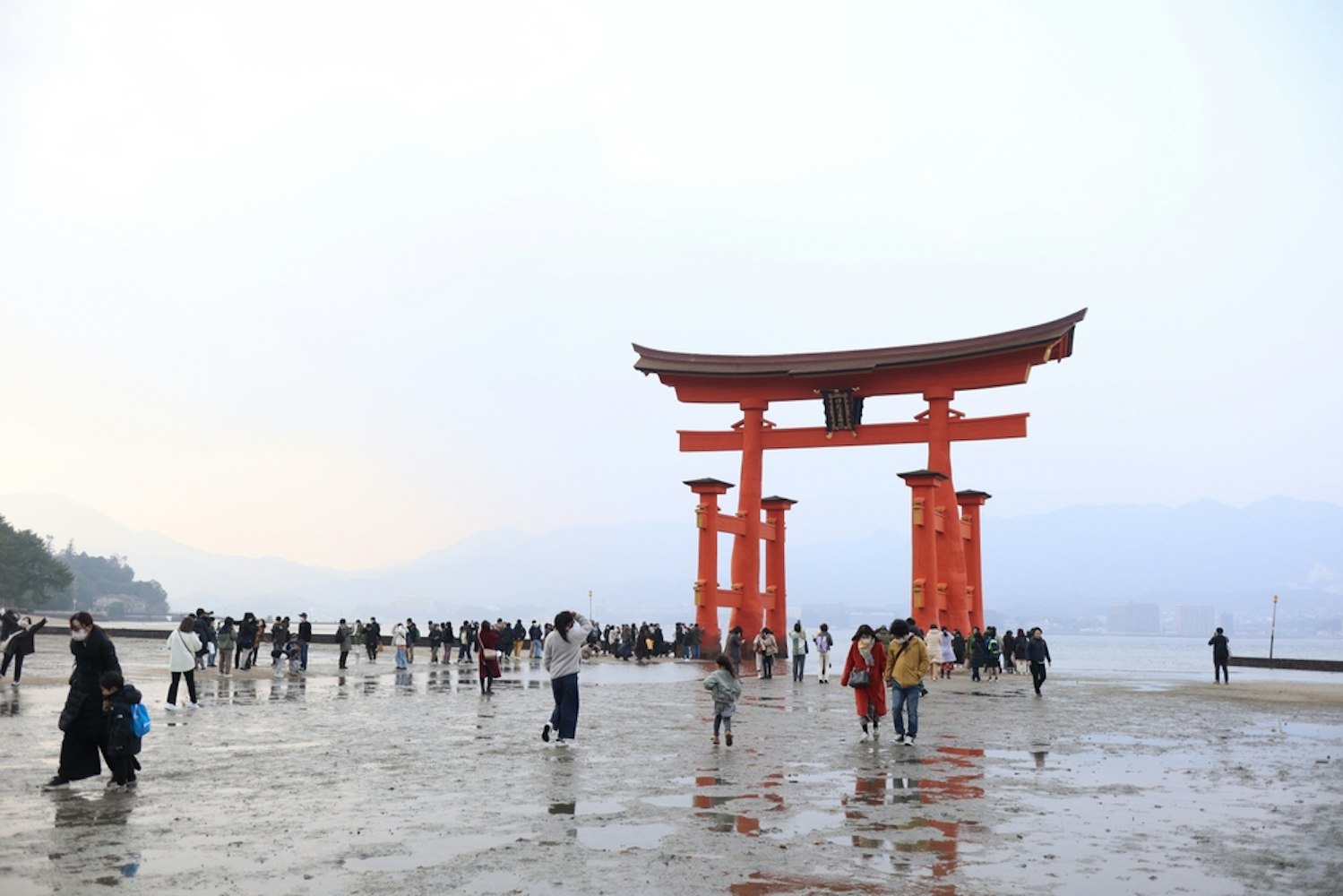
이쓰쿠시마 신사는 유네스코 세계문화유산으로 지정되어 세계적인 문화적, 역사적 중요성을 강조하고 있습니다. 신덴즈쿠리 양식에 뿌리를 둔 신사의 건축은 고대 일본의 우아한 미학을 반영합니다.
물 위의 죽마 위에 서 있는 건물은 자연과 영성의 조화를 상징합니다. 이 신사는 일본의 유산을 상징하는 건축적, 정신적 가치로 보호받고 있습니다.
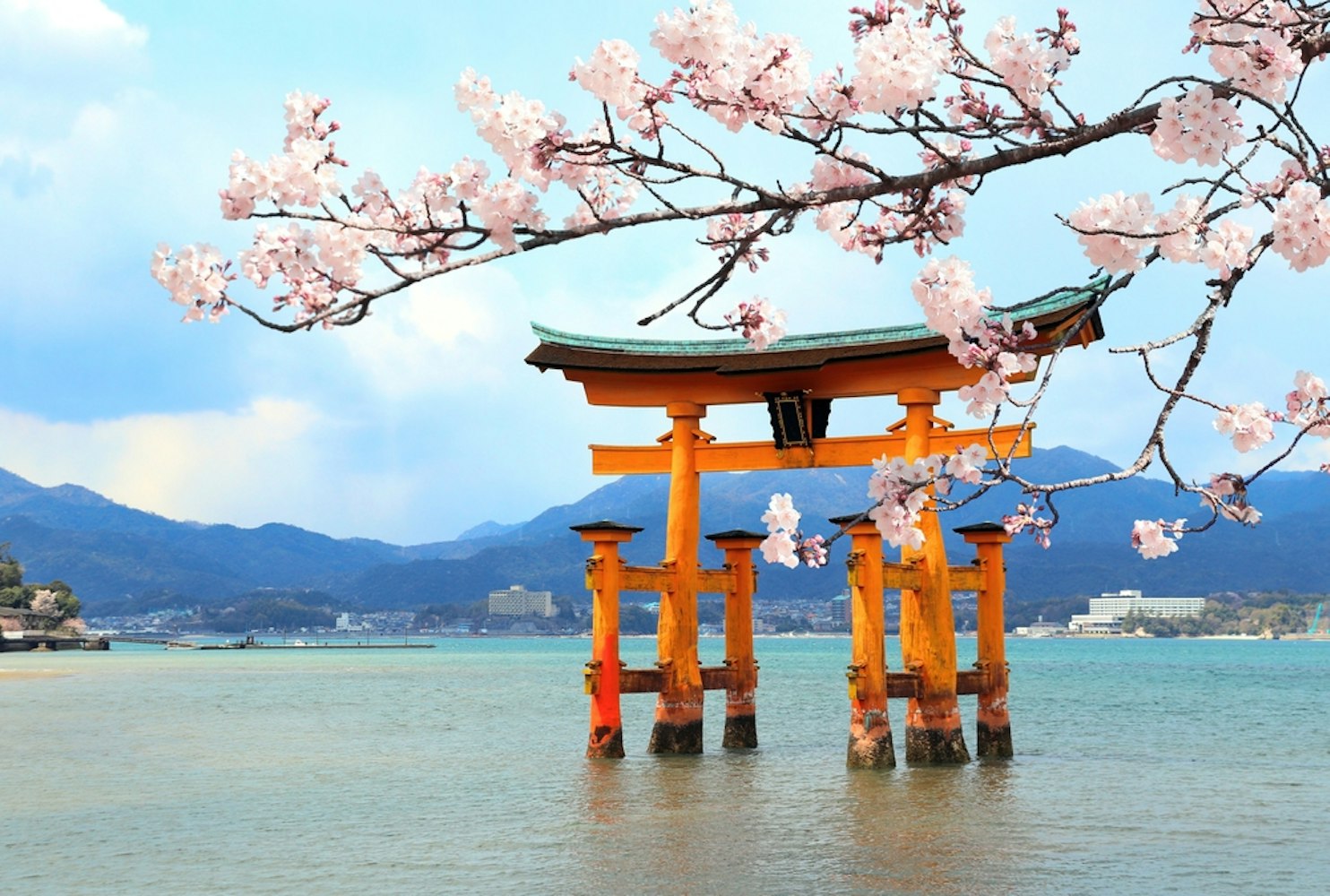
헤이안 시대 후기에 다이라노 기요모리가 세운 이쓰쿠시마 신사는 일본 황실과 깊이 얽혀 있습니다. 이 신사는 아메노호히노미코토, 아마츠히코네노미코토, 구마노쿠스비노미코토의 세 신을 모시고 있으며, 이들은 섬과 바다를 수호한다고 믿어집니다.
이곳의 중요성은 해양 순례지이자 타이라 일족에 대한 경의의 장소로 커졌습니다. 신사의 구조와 전통은 일본의 과거와 종교적, 정치적 영향에 대한 통찰력을 제공합니다.
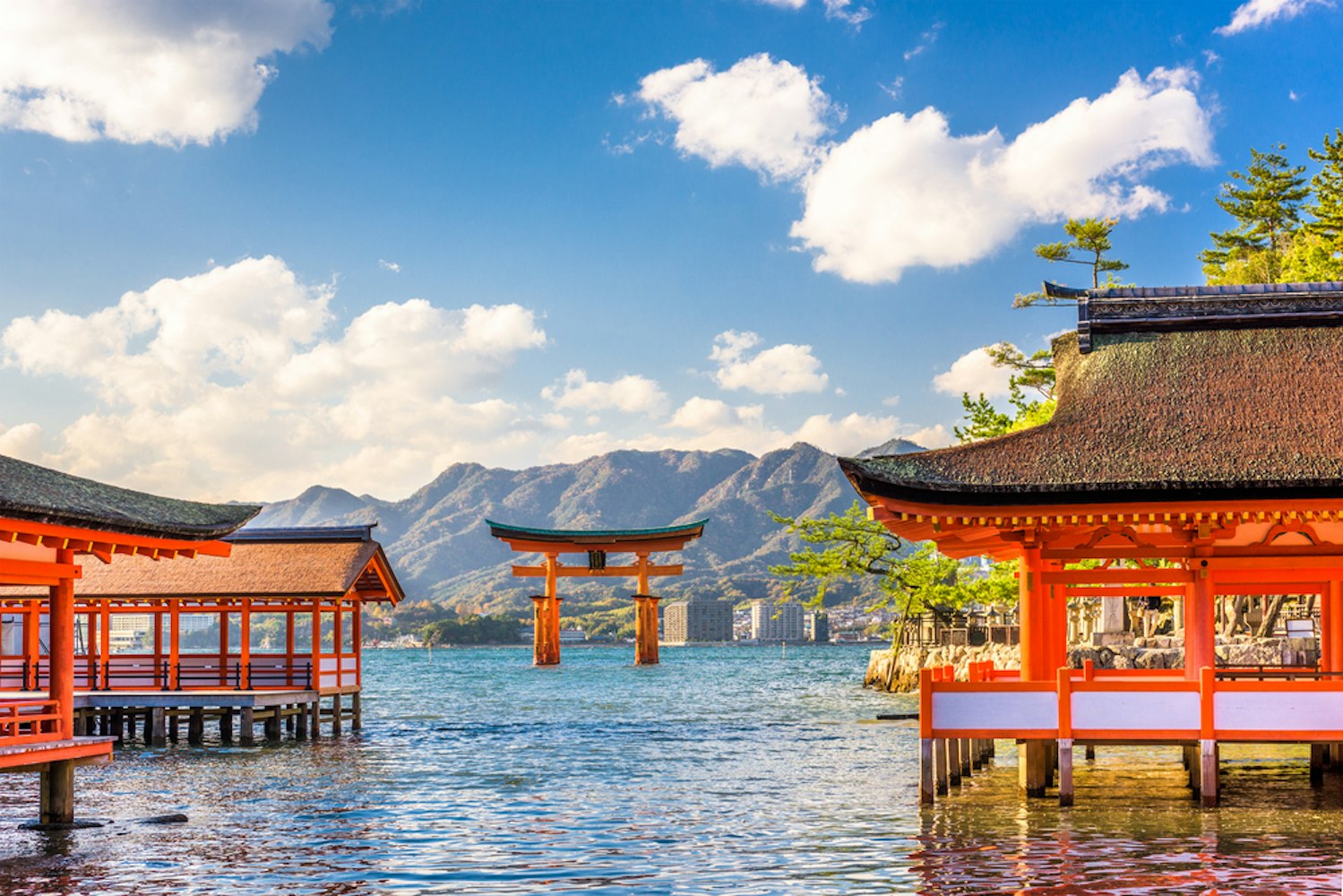
이 세토 내해 신사에 특별한 배경을 추가하며, 만조와 썰물 사이를 오가는 탁 트인 전망을 제공합니다. 방문객들은 도리이가 물 위로 솟아오르거나 물 속으로 가라앉을 때 다양한 전망대에서 도리이의 극적인 변화를 목격할 수 있습니다.
주변 바다와 섬은 자연의 아름다움과 문화 유산이 만나는 평화로운 휴양지를 제공합니다. 바다와 신사의 상호 작용은 독특한 분위기를 만들어 사진 작가의 꿈이됩니다.
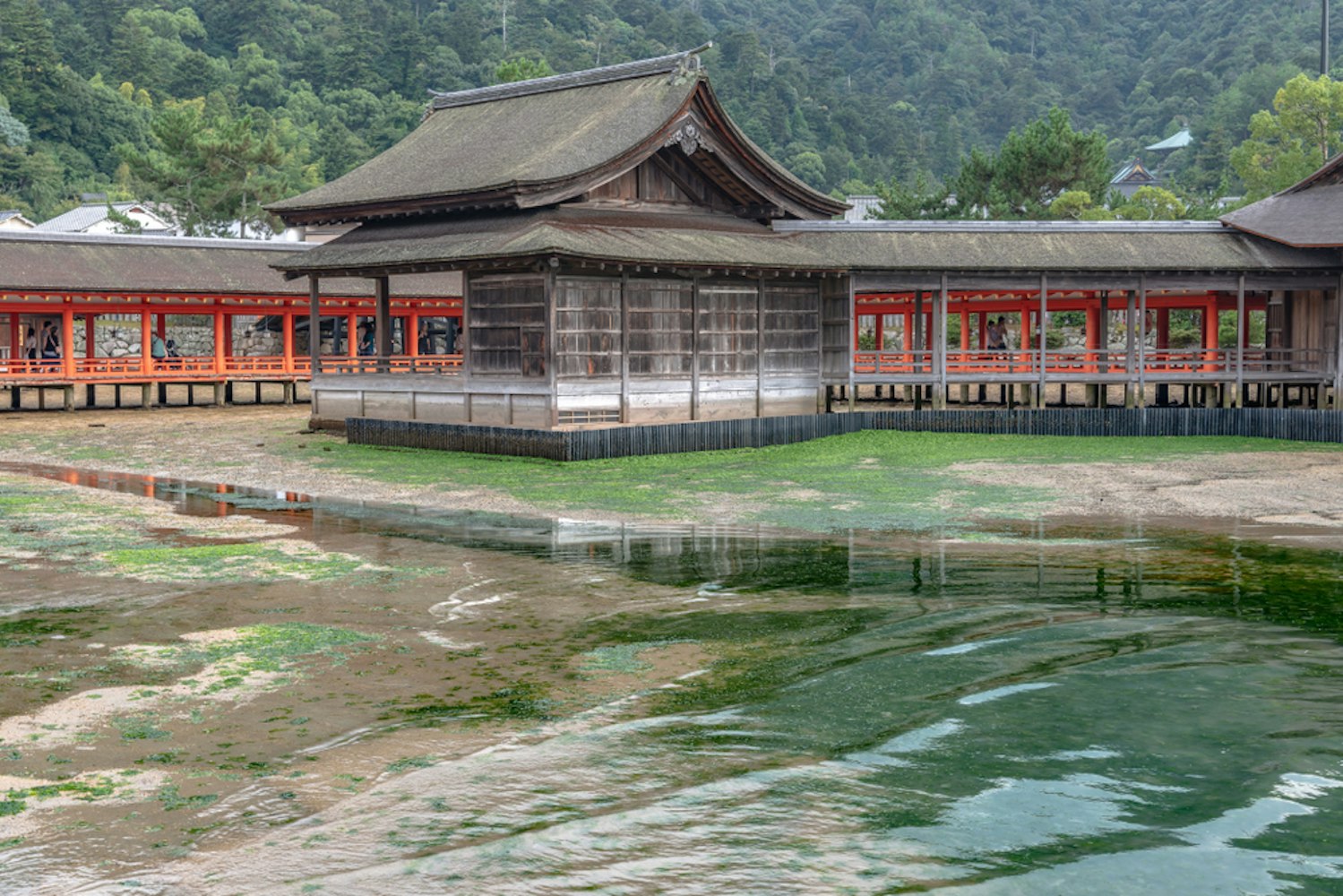
이쓰쿠시마 신사는 일본에서 유일하게 살아남은 가장 오래된 노 무대를 포함한 중요한 문화재가 있는 곳입니다. 물 위에 세워진 이 무대는 신사 특유의 것으로, 국보로 지정되어 있습니다.
신사 건물과 이 무대는 이 장소의 예술성과 정신적 중요성을 반영합니다. 1952년에 지정된 이 복합 단지는 일본의 문화 유산에 매우 중요하며 보존에 관심이 있는 관광객과 학자들을 끌어들이고 있습니다.
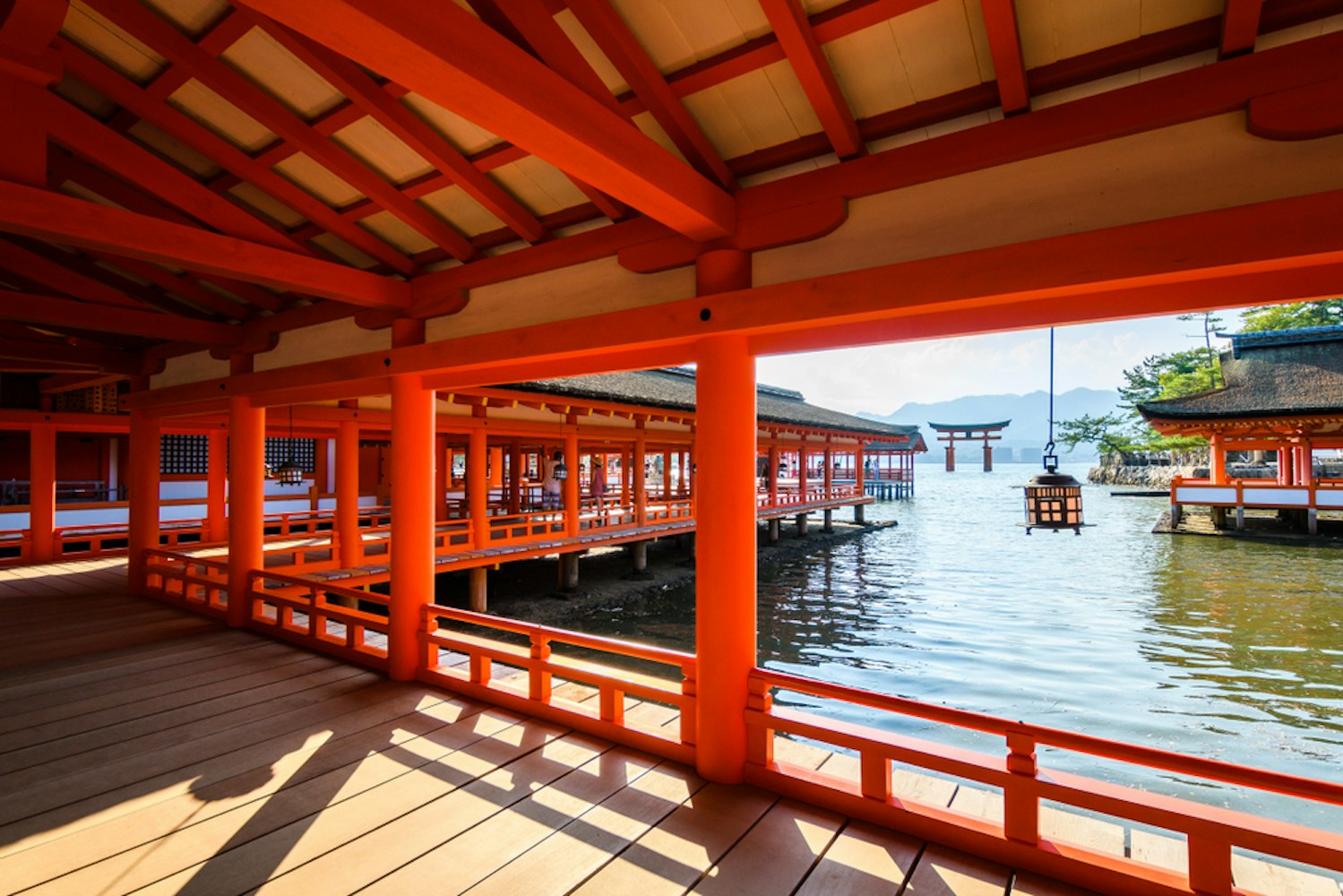
방문객들은 신사의 동쪽과 서쪽 회랑을 따라 걸을 수 있으며, 바다 위에 매달려 있고 다양한 건물을 연결할 수 있습니다. 이 나무 길은 만조 시 신사 자체처럼 물에 떠 있는 것과 유사한 경험을 제공합니다.
복도는 정화 홀과 본당과 같은 신사의 필수 부분을 연결합니다. 이곳을 걷다 보면 방문객들은 고요하고 영적인 분위기에 완전히 빠져들 수 있습니다.
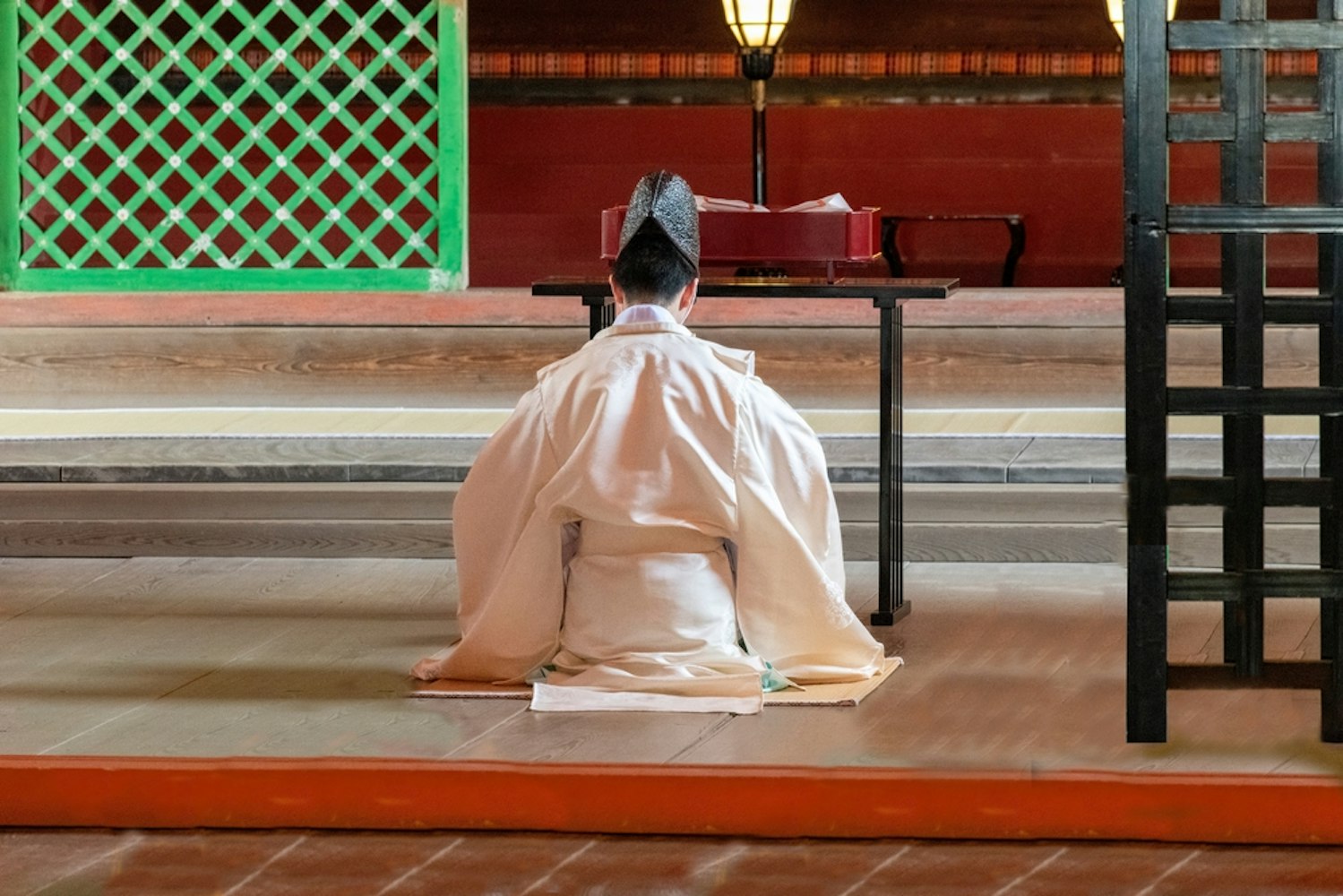
이쓰쿠시마 신사 방문객들이 신토 의식을 목격하거나 참여할 수 있는 활발한 예배 장소로 남아 있습니다. 수 세기 동안 행해져 온 이러한 의식은 일본의 정신적 전통과 깊은 관련이 있습니다.
방문객들은 경의를 표하고 신사의 본당에서 이러한 의식을 거행합니다. 의식에 참석하면 오늘날 일본 문화를 형성하고 있는 종교 관습을 엿볼 수 있습니다.

미야지마 섬의 미센 산은 이쓰쿠시마 신사를 방문한 후 경치 좋은 하이킹 경험을 제공합니다. 이 산은 신성한 곳으로 여겨지며 히로시마 만과 세토 내해의 멋진 탁 트인 전망을 제공합니다.
하이킹을 좋아하지 않는 사람들을 위해 오르막길에 더 쉽게 접근할 수 있는 로프웨이가 있습니다. 산의 자연의 아름다움과 영적인 중요성은 섬의 매력을 더하여 자연 애호가가 꼭 방문해야 할 곳입니다.
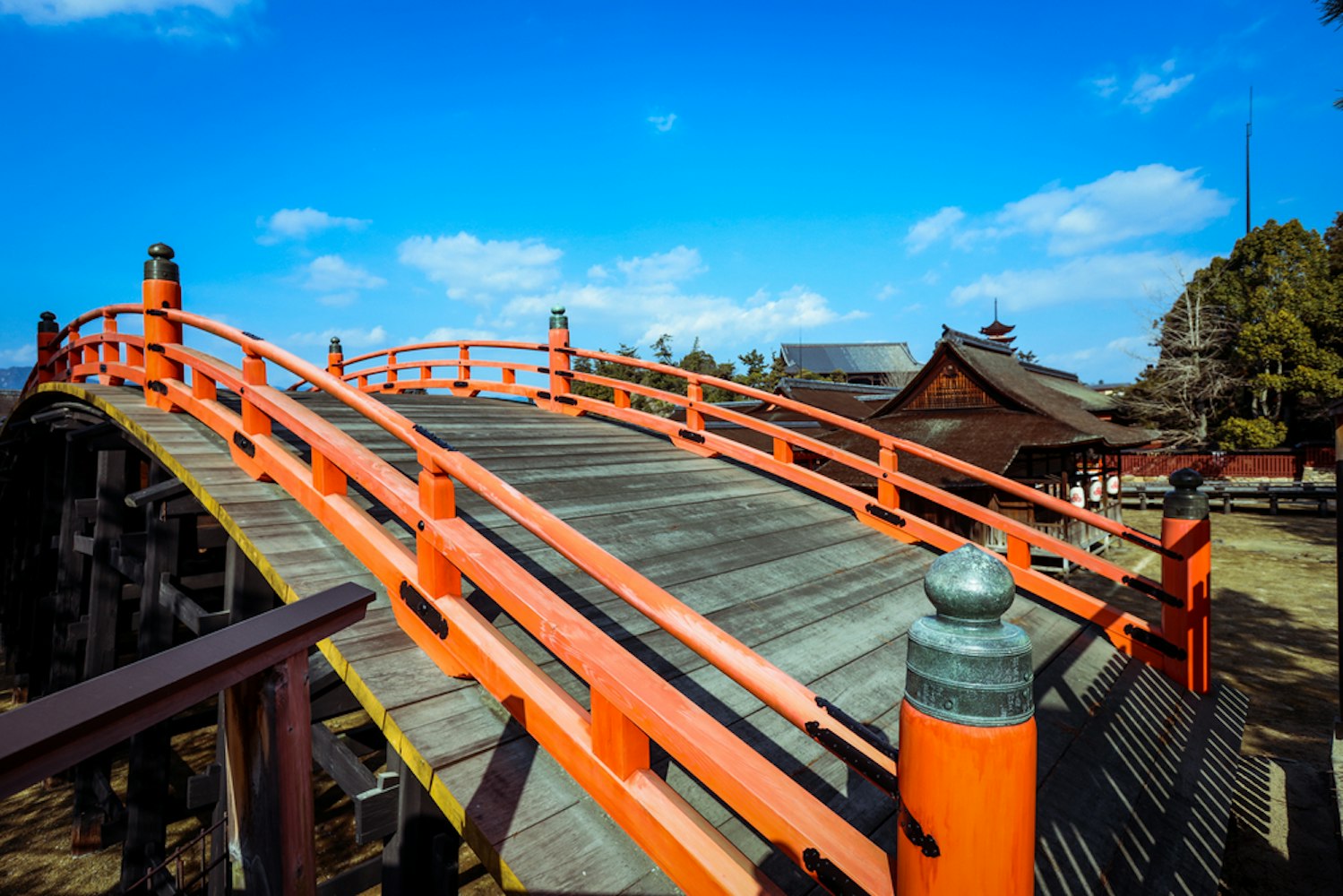
이쓰쿠시마 신사의 보물관에는 고대부터 에도 시대까지 이어진 역사적 유물, 의식용 물건, 예술 작품이 소장되어 있습니다. 이 물건들은 방문객들에게 신사의 길고 이야기가 많은 과거에 대한 통찰력을 제공합니다.
홀의 컬렉션은 이 지역의 종교 및 문화 유산을 반영합니다. 일본의 역사적 보물에 관심이 있는 사람들에게는 매력적인 곳입니다.
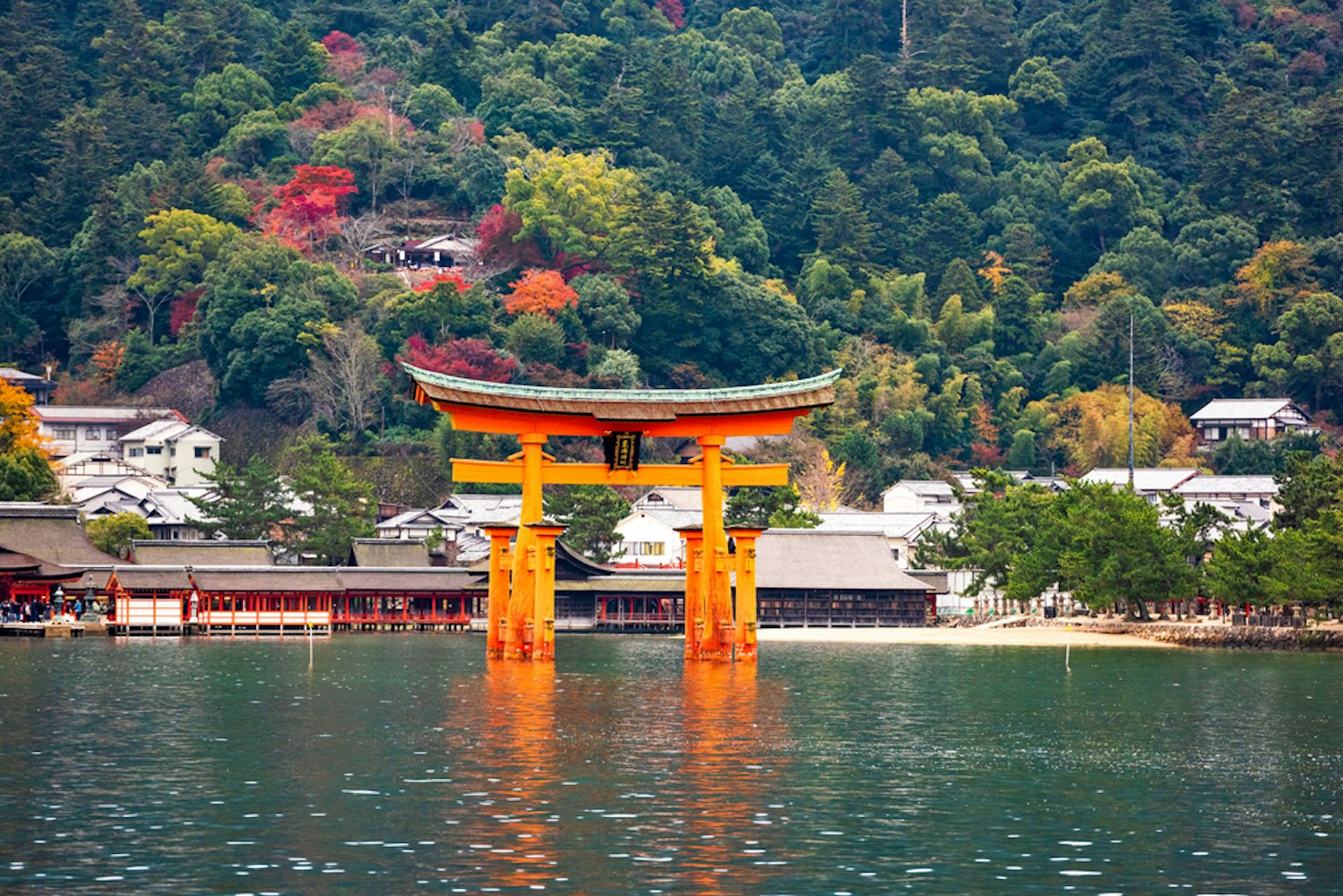
미야지마 섬 에는 이쓰쿠시마 신사 외에도 여러 신사와 명승지가 있어 둘러볼 가치가 있습니다. 마로도 신사(Marodo Shrine), 텐진 신사(Tenjin Shrine), 섬의 아치형 다리와 정화 홀(Purification Hall)은 추가적인 문화 체험을 제공합니다.
이 섬의 신성한 지위와 자연의 아름다움은 이곳을 고요한 탈출구로 만듭니다. 방문객들은 고요한 풍경과 고대 유적지를 탐험하면서 역사와 자연을 즐길 수 있습니다.
이쓰쿠시마 신사는 히로시마 시내에서 쉽게 접근할 수 있습니다. 방문객들은 히로시마 역에서 미야지마구치 역까지 기차를 타고 인근 부두에서 미야지마 섬까지 페리를 타고 갈 수 있습니다.
페리를 타고 히로시마 만을 건너면 세토 내해와 주변 섬의 아름다운 전망을 감상할 수 있습니다. 섬에 도착하면 신사는 가까운 도보 거리에 있습니다. 미야지마 부두방문객들은 섬의 고요한 아름다움을 도보로 탐험할 수 있습니다.
현재의 신사를 충분히 감상하기 위해 조수 간만의 차에 맞춰 방문 계획을 세우십시오. 밀물 때는 떠 있는 도리이를 볼 수 있고, 썰물 때는 신사 경내를 둘러볼 수 있습니다.
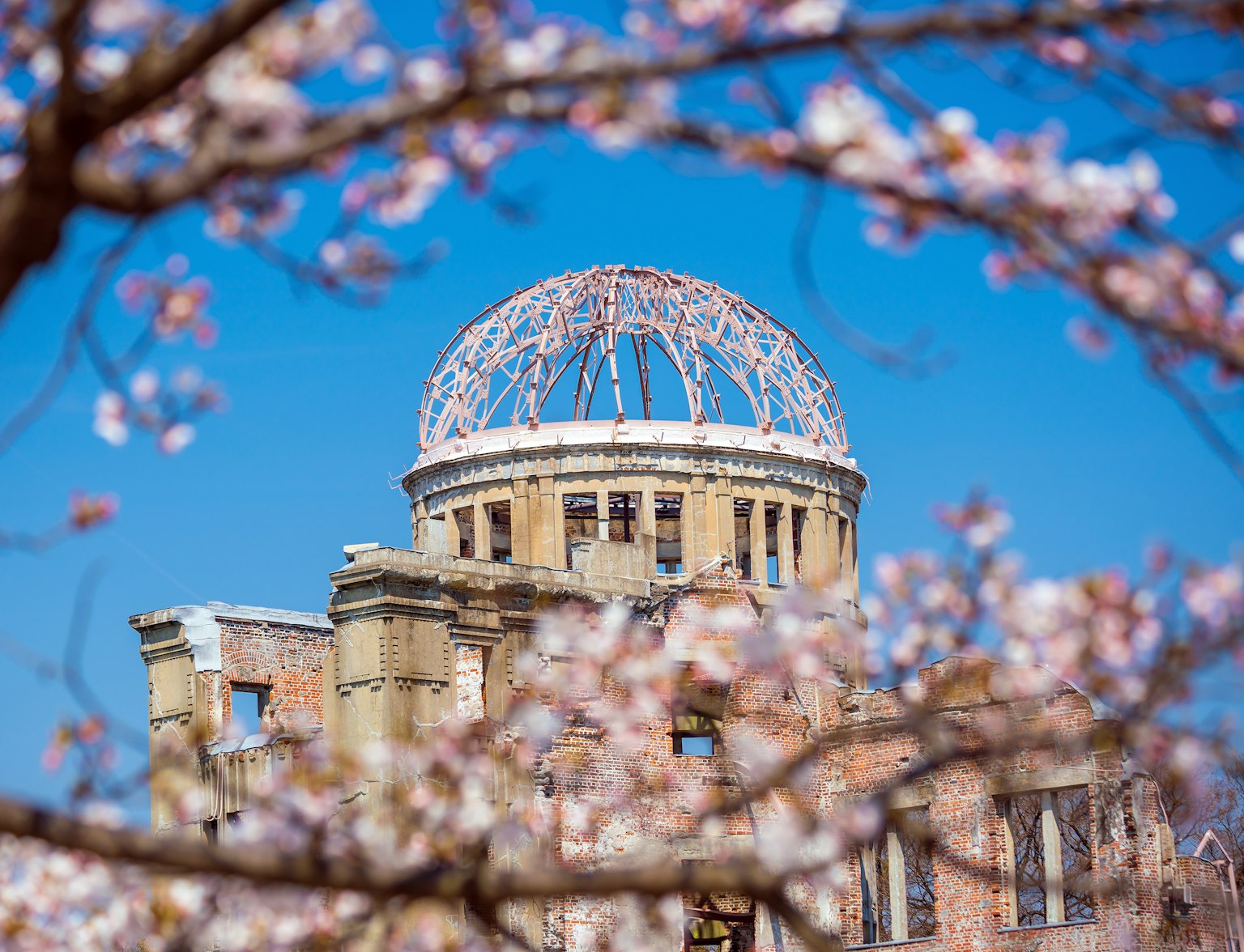
이 투어를 통해 히로시마와 미야지마의 심오한 역사와 자연의 화려함을 발견하십시오.
이쓰쿠시마 신사는 상징적인 떠다니는 도리이, 숨막히는 자연 환경, 뿌리 깊은 역사가 있는 잊을 수 없는 여행지입니다. 유네스코 세계문화유산으로 지정되어 있기 때문에 영적인 중요성에 흥미를 느끼거나 주변의 세토 내해에 매료되는 이 신사는 일본을 여행하는 모든 여행자에게 꼭 필요한 곳입니다.
신사의 보물을 경험하고, 회랑을 걸으며, 과거와 현재가 조화롭게 공존하는 신성한 공간인 미야지마 섬의 아름다움에 흠뻑 빠져보세요.
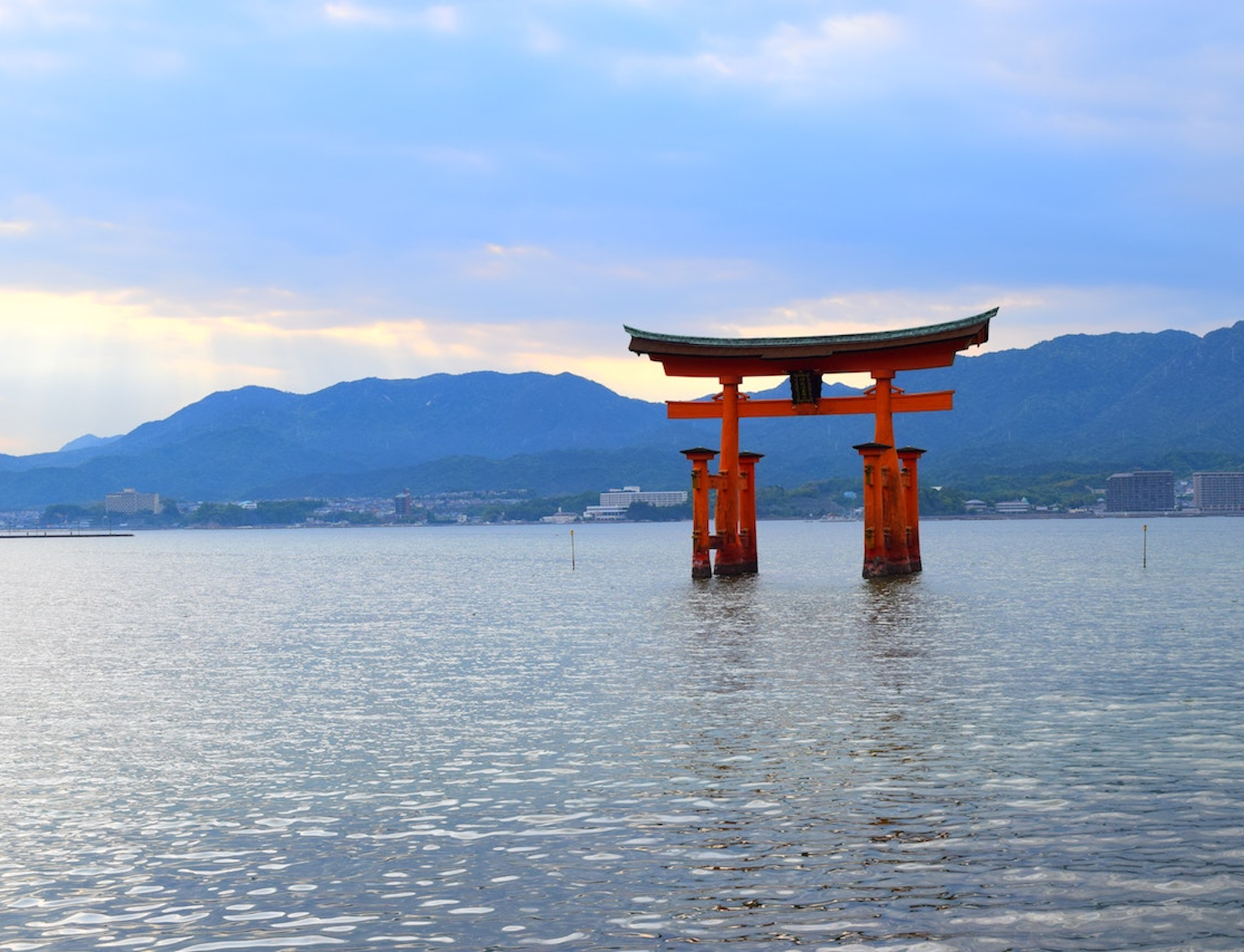
독특한 인력거 투어에서 미야지마 섬의 매혹적인 아름다움을 경험하십시오.
일본의 이쓰쿠시마 신사의 특이한 점은 무엇입니까?
이쓰쿠시마 신사는 일본에서 유일무이한 곳으로, 조수가 오토리이(O-Torii) 문 아래로 밀려들었다가 물러가 해저가 드러나는 곳입니다. 이 독특한 환경은 만조 동안 문과 신사가 물 위에 떠 있는 듯한 인상을 줍니다.
이쓰쿠시마 신사는 그만한 가치가 있습니까?
기회가 있다면 이 목적지는 방문할 가치가 있습니다.
이쓰쿠시마 신사가 유명한 이유는 무엇입니까?
이 신사는 만조 시 물 위에 떠 있는 것처럼 보이는 유명한 도리이로 국제적으로 인정받고 있습니다.
얼마나 많은 사람들이 이쓰쿠시마 신사를 방문합니까?
2019년 미야지마 섬은 466만 명의 방문객을 기록했습니다. 그러나 COVID-19 전염병의 영향으로 이 숫자는 2021년에 188만 명으로 크게 떨어졌습니다.
이쓰쿠시마는 몇시에 개장하나요?
연중 내내 매일 오전 8시 30분부터 오후 4시 30분까지 운영합니다.



